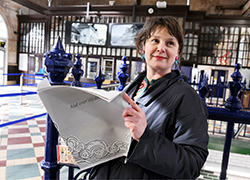How warm is your home?
The health and social implications associated with living in a cold home have been explored by University of Teesside researchers.
The study, funded by the Eaga Partnership Charitable Trust, focused on the winter activity of a group of local older people and tested to what extent their activity levels and health were affected by how cold their home was.
Few studies have been conducted on this matter and yet the UK has one of the worst winter death rates in Europe, even higher than Siberia in Russia. The North East has more avoidable winter illnesses than most other regions of Britain and there are some 30,000 avoidable deaths each winter in the UK.
The research, carried out by Steve Fenby, Tracey Howe and James Goodwin from the University of Teesside, involved two groups of older people from the North East who were divided into different heating categories: A ‘cold’ group who paid separately for their heating from their rent A ‘warm’ group who either paid a flat rate for heating as part of their rent, or paid a separate flat rate heating charge, regardless of consumption
The study used miniaturised technology to measure the temperature of older people’s homes and to monitor their daily movements during last year’s winter. The study found that those older people who were charged specifically for heating costs over and above their rent had significantly colder homes because they limited the use of their central heating or gas fires to save money. This group also went outdoors considerably more often than those in the ‘warm’ group, and were more physically active, thus increasing their exposure to hostile weather conditions. These findings indicate that older people in colder homes were at double the risk of fatal illness brought on by the cold, such as heart attack and stroke. Dr James Goodwin said: “It is not widely appreciated that the increase in winter illness and death amongst older people is due to respiratory illness, strokes and heart attack. Cold indoor temperatures are known to increase these risks in the winter. This new evidence shows that heating charges are linked to colder homes and that older people living in cold homes also go out more into the cold air. This doubles their exposure to the risks of serious winter illness.”
Dr Naomi Brown of the Eaga Partnership Charitable Trust added: “This is an important piece of research which suggests that the financial pressures on older people to heat their homes adequately lead to colder homes. This in turn leads to behaviour that places them at increased risk of poor health in the winter. The message appears to be to insulate the home, heat it adequately and ensure that if we go out into the cold then we should wear enough clothing to keep us warm.”
 Teesside University hosts groundbreaking hydrogen conference
Teesside University hosts groundbreaking hydrogen conference University supporting development of new £1m concrete plant
University supporting development of new £1m concrete plant Academic’s artwork on display at Middlesbrough station
Academic’s artwork on display at Middlesbrough station